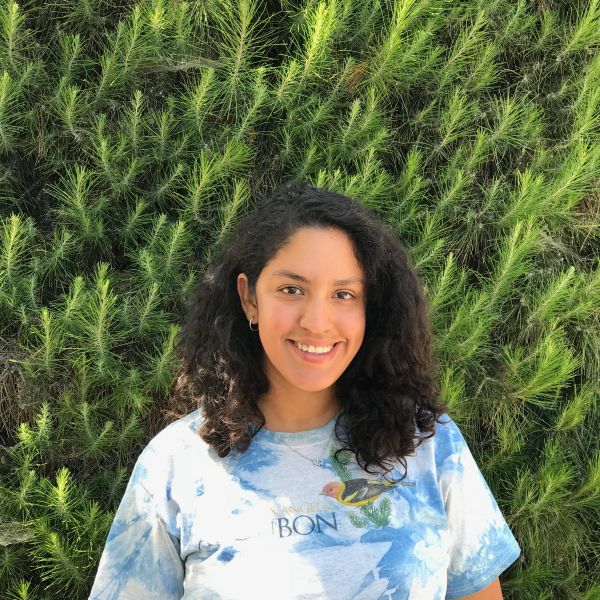Image

-
Emily Cobar
Restoration and Education Coordinator, Environment for the Americas
- ee360 Fellow
Emily Cobar is the Community Program Manager at Los Angeles Audubon Society, a nonprofit organization that focuses on wildlife conservation through research, education, recreation, and habitat restoration. Emily leads many environmental education programs for varying audiences from inner-city elementary school students to high school students to community college students. She enjoys teaching about the natural history of Los Angeles, including topics such as water conservation, plant communities, urban wildlife, geology, and more. She also conducts bird monitoring and restores habitat in LA's urban parks. Emily gained interest in an EE career after participating in a yearlong conservation research internship and her first backpacking trip to Yosemite National Park in the eleventh grade. She was intrigued not only by the views and the experience, but by the backpacking leaders whose job it was to take inner-city teens with no backcountry experience into the wilderness, teaching them ecology, survival techniques, and leadership skills. She was inspired to become an environmental educator in Los Angeles to show the community that no matter how urbanized the city is, nature is ubiquitous. Emily received her BA in Environmental Studies from UC-Santa Cruz. In her free time, she likes indoor and outdoor activities including playing board games and exploring new nature spots in LA.
About Emily‘s ee360 Community Action Project
Emily's ee360 Community Action Project encourages intergenerational networking and learning with college students, public school teachers, and elementary school students. In Emily’s project, college students, who are alumni from either Los Angeles Audubon Society’s high school or college programs, are trained in a workshop series that includes an introduction to environmental education, a review in Next Generation Science Standards, and reading through lessons in the Project Learning Tree book to get ideas to develop and/or adapt to the curriculum. Then, they engage with the students in hands-on learning at two elementary schools that are in highly urbanized areas. The goal of this project is for the college students or recent college graduates to build on their resumes, build their network as young professionals, and teach others about solving local environmental issues. Emily hopes the students will use the Schoolyard Habitat as an outdoor space either during or after school with Esperanza Elementary School’s Eco-club. As the college students gain first-hand experience in environmental education, they will then have the opportunity to teach students at a new school that has not previously worked with Los Angeles Audubon. The organization recently received a grant to establish a another Schoolyard Habitat at the new school Dayton Heights Elementary. The college students will eventually use the habitat as as a teaching tool focusing on the before and after establishing a native plant habitat. They will cover topics about wildlife presence, native plant adaptations, and watershed. The impact of the project is that it will continue to develop young environmental advocates in the city of Los Angeles and create a network where members of the community may share resources with one another.